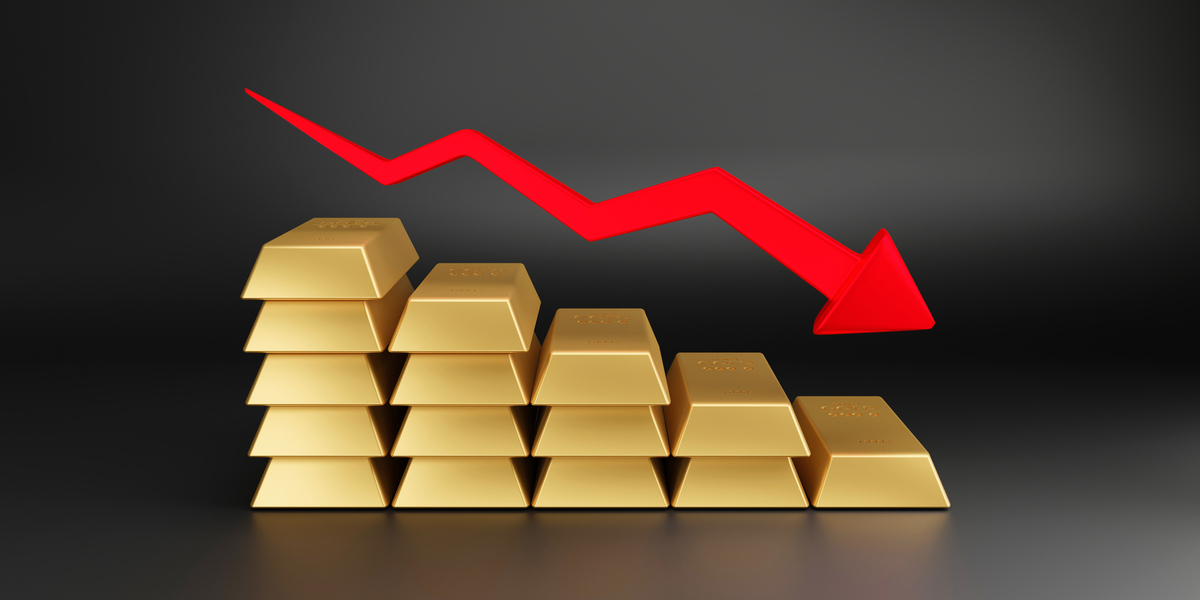Gold traditionally has been a safe haven for investors during times of economic downturns and stock market crashes. Experiences of the past as during the Global Financial crisis in 2008-09 tell us that gold prices have spiked when an economic recession or threats of a global recession are looming. However, in 2022, gold is not investors’ choice as an alternative safe asset to equities. This is despite the ongoing geopolitical crisis in Russia and Ukraine leading to soaring food and fuel prices and inflation, possibility of a recession in many advanced economies and threats of debt default in emerging economies such as Sri Lanka, Pakistan and to some extent Egypt. Gold prices are trading at US$ 1,716 (27th July) an ounce compared to US$ 1,997 an ounce in August 2021.
Historic trend of Gold Price relative to World GDP Growth %
Source: Refinitiv, World Bank
The concept of flight to safety was prevalent during the global economic crisis of 2007 – 09. In order to make the comparison easier, we’ve taken a six-year period from Jan-2005 to Dec-2010, with Jan-2005 as the base year.
2005 - 2010 Performance, Index Value (Jan 2005 = 100)
Source: Refinitiv
The U.S. Federal Reserve in 2004-06, began increasing interest rates in a bid to stabilize rising inflation. This monetary tightening also stabilized the flow of credit into the real estate sector, with exacerbated effects on exotic adjustable mortgages. With the housing bubble crashing, the financial institutions behind those mortgages also crashed ultimately causing contagion within the U.S. and then to the global economy. With an economic contagion, bankruptcies and job losses were witnessed across different sectors and countries. Equity indices including – MSCI World, S&P 500 and S&P GCC composite index witnessed double digit falls, due to their exposure to economic cyclicality. During the same turbulent period, as investors turned risk averse, the safe-haven assets such as gold more than doubled in price.
In 2022, amid rising inflationary pressures and aggressive monetary tightening, gold price is under downwards pressure.As of June 2022, equity indices such MSCI World and S&P 500 are down 21% and 19% YTD respectively, the gold prices have also fallen 6% YTD.
2017 - 2022 YTD Performance, Index Value (Jan 2017 = 100)
Source: Refinitiv, As of 24th July 2022
Unlike the 2008 global financial crisis, 2022 is witnessing aggressive interest rate hikes by the U.S. federal Reserve. Aggressive interest rate hikes, and expectations of further rate hikes in the year ahead are capping the upward gold price movement. In periods of aggressive interest rate hikes and increasing value of USD, an investor is better off holding short-term interest-bearing instruments. Thus, we see a difference in gold price movement in 2022 relative to 2009-10. During the global financial crisis (2008-09) the equity markets fell, but the monetary policy was accommodative to help markets recover from a crisis. Currently, the equity markets are performing poorly in a scenario of monetary tightening.
Apart from being a hedging instrument, the exposure for which can be attained via both physical and synthetic means, gold is used in jewelry, technology, by central banks and investors taking physical delivery. Hence, demand factors play a role in the movement of gold prices.
Physical Gold Demand Break-up - Q1’2022, Units in tonnes
Source: ICE Benchmark Administration, Metals Focus, Refinitiv GFMS, World Gold Council
The largest stake in physical gold transactions is for investments (gold bars, coins, and gold-backed ETFs) followed by jewelry fabrication. Jewelry fabrication witnessed a drop in the first quarter Q1’2022, due to weaker demand from China and India. China is the largest consumer of gold globally. COVID restrictions in China in some months of Q1 and Q2 of 2022 is one of the main reasons for reducing global demand for gold, which therefore prevented an upward movement in prices. Depreciation of the Indian Rupee and increase in customs duty have kept jewelry demand in India tepid. Demand for physical gold witnessed a drop in the second quarter of 2022. Global gold ETFs that hold gold in physical form, witnessed outflows of roughly USD 1.7 billion in the month of June pushing the Q2 net outflows to USD 2 billion. The inflows and outflows in the ETF market signal short-term and long-term opinions and desires to holding gold. In the year ahead, higher nominal interest rates coupled with a strong dollar, could prove to impediments for the gold market. However, the larger question for investors would be on choosing of gold as a safer bet investment as a part of their portfolio.
Gold is still one of the assets that has shed lesser value in 2022 compared to other commodities such as silver and many equity markets. Commodity experts and portfolio managers have a mixed view of the prospects of gold prices improving in H2 of 2022. However, most of them believe that gold would continue to stay as the preferred safe bet alternative when equity markets tumble as during the global financial crisis.
Stay Tuned To Marmore MENA Insights!
Never miss a patch or an update with Marmore's Newsletter. Subscribe now!
Related Article
The uptick in MENA Eurobond issuances – A sign of things to come?
MENA debt issuances have touched record highs in Q1 2025. Will the uptick continue in subsequent quarters?
Read MoreKuwait’s Approval of Public Debt Law: Re-emerging on Investors’ Radar
Kuwait has passed the long-awaited debt law in March 2025. The blog explores the importance of the law, the expected benefits and outlook for the countrys return to debt markets.
Read MoreThe Dynamic Rise of Fintech in the GCC
The convergence of technology and finance is reshaping the GCC Financial Ecosystem. The blog explores key players, regulatory framework and market dynamics of Fintech in the GCC region.
Read MoreTags
No Tags!





